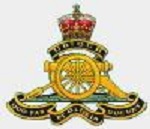Hobby Master HG3420 British Achilles IIC Tank Destroyer - "Chelsea," British I Corps, Normandy, France, Summer 1944 (1:72 Scale)
"Quo fas et gloria ducunt" ("Where Right and Glory Lead")
- Motto of the Royal Artillery
 The M10 were, numerically, the most important US tank destroyer of World War II. In its combat debut in the North African campaign, the M10 was successful as its M7 3-inch gun could penetrate most German tanks then in service at long range. The heavy chassis did not conform to the tank destroyer doctrine of employing very light, high-speed vehicles, thus it began to be supplemented by the 76 mm Gun Motor Carriage M18 early in 1944. Later in the Battle of Normandy the M10's gun proved to be ineffective against the frontal armor of the numerous German Panther tanks encountered and by the fall of 1944 the improved 90 mm Gun Motor Carriage M36 was beginning to replace it, though it remained in service until the end of the war. In the Pacific, US Army M10s were used for traditional infantry-support missions and were unpopular due to their open topped turrets. The Japanese tactic of very close-in infantry attacks against US AFVs made the M10 much more vulnerable than a fully-enclosed tank.
The M10 were, numerically, the most important US tank destroyer of World War II. In its combat debut in the North African campaign, the M10 was successful as its M7 3-inch gun could penetrate most German tanks then in service at long range. The heavy chassis did not conform to the tank destroyer doctrine of employing very light, high-speed vehicles, thus it began to be supplemented by the 76 mm Gun Motor Carriage M18 early in 1944. Later in the Battle of Normandy the M10's gun proved to be ineffective against the frontal armor of the numerous German Panther tanks encountered and by the fall of 1944 the improved 90 mm Gun Motor Carriage M36 was beginning to replace it, though it remained in service until the end of the war. In the Pacific, US Army M10s were used for traditional infantry-support missions and were unpopular due to their open topped turrets. The Japanese tactic of very close-in infantry attacks against US AFVs made the M10 much more vulnerable than a fully-enclosed tank.
Approximately 54 M10s were supplied to the USSR though their usage in Red Army service is largely unrecorded. The M10 also equipped units of the Free French Army; one M10 named "Sirocco", crewed by a regiment composed of French sailors, famously knocked out a German Panther tank on the Place de la Concorde in Paris. British M10s were designated 3 in SP, Wolverine and saw action in Italy and France, including some re-armed with the much more effective 17-pounder guns which gained the designation 17 pdr SP. Achilles.
The M10 had an open-topped turret that left it vulnerable to artillery and mortar fire and infantry assault especially in urban combat and forest areas, where a simple hand grenade could be tossed inside. By the end of the war its armor was too thin to provide protection from the new German tanks and anti-tank guns. The other main disadvantage of the M10 was its very slow turret traverse, the M10 did not have powered traverse and so the crew had to hand-crank the turret to traverse it, taking approximately two minutes to traverse 360 degrees. US tank destroyers fired much more HE than anti-tank ammunition, indicating that they were employed much like the tanks they were supposed to support.
A British variant, designated the "Achilles", was developed to mount the successful 17-pounder anti-tank gun in a modified turret. It was used by the British, Canadian and Polish armies in Italy and northwest Europe.
Pictured here is a 1:72 scale replica of a British Achilles IIC tank destroyer dubbed "Chelsea," which was attached to C troop, 245 Battery, 62nd Anti-Tank Regiment, Royal Artillery, the British I Corps, then deployed to Normandy, France, during the summer of 1944.
Sold Out!
Dimensions:
Length: 4-inches
Width: 1-1/2-inches
Release Date: May 2018
 Historical Account: "Battle of the Brigade Box" - The Battle of Villers-Bocage, fought during the Second World War on June 13th, 1944, was part of the wider Battle of Normandy. While attempting to encircle and capture the German-occupied city of Caen, a Brigade group of the British 7th Armoured Division made an opportunistic thrust into the German flank through a gap that opened up in the front line. The British reached the town of Villers-Bocage without incident, but the Germans had foreseen the danger and correctly anticipated the likely direction of an attack. The unexpected intervention of German heavy armor caught the 7th Armoured Division's vanguard unprepared, and increasingly strong German counterattacks caused the British to abandon Villers-Bocage for a more defensible position outside the town. The Brigade group was withdrawn the following day.
Historical Account: "Battle of the Brigade Box" - The Battle of Villers-Bocage, fought during the Second World War on June 13th, 1944, was part of the wider Battle of Normandy. While attempting to encircle and capture the German-occupied city of Caen, a Brigade group of the British 7th Armoured Division made an opportunistic thrust into the German flank through a gap that opened up in the front line. The British reached the town of Villers-Bocage without incident, but the Germans had foreseen the danger and correctly anticipated the likely direction of an attack. The unexpected intervention of German heavy armor caught the 7th Armoured Division's vanguard unprepared, and increasingly strong German counterattacks caused the British to abandon Villers-Bocage for a more defensible position outside the town. The Brigade group was withdrawn the following day.
Launched on the heels of D-Day, Operation Perch was a pincer attack aimed at capturing the major Allied objective of Caen. British XXX Corps, forming the western arm of the encirclement, pushed south before becoming embroiled with strong German forces in a contest for the town of Tilly-sur-Seulles. British I Corps's eastern thrust was launched from the Orne bridgehead, but made little progress in the face of determined resistance and constant counterattacks. With mounting casualties and no sign of an imminent German collapse, by June 13th the offensive east of Caen was called off. To the west, on XXX Corps's right flank, American pressure had opened up a wide gap in the German lines. In an effort to keep operations mobile, a Brigade group of the 7th Armoured Division was diverted from the combat around Tilly-sur-Seulles and ordered to advance through the gap towards the town of Villers-Bocage. It was hoped this flanking maneuver would force the German Panzer Lehr Division to fall back.
The 7th Armoured's Brigade group entered Villers-Bocage during the morning of June 13th, and its lead elements moved quickly to secure Point 213, a commanding area of high ground to the east. Unaware of any German presence, the British were ambushed by Tiger I tanks of the SS Heavy Panzer Battalion 101, which had been stationed in the area as a precautionary measure. In less than 15 minutes numerous tanks, anti-tank guns and transport vehicles fell victim to the German force, the vast majority being destroyed by SS-Obersturmfuhrer Michael Wittmann's tank. Point 213's defenders were cut off and taken prisoner, and a German counterattack was launched against the town during the afternoon. Although this ran into a British ambush and suffered significant losses, after six hours the British commander decided to withdraw his force to a defensive position outside the town; a move that was accomplished, before nightfall, largely without interference.
Fighting resumed the next day in the Battle of the Brigade Box, following which the decision was taken to pull the Brigade group back from its salient. Villers-Bocage played no further role in Second Army's Battle for Caen, which was finally liberated on July 19th. A Royal Air Force bombing raid in support of Operation Epsom largely destroyed Villers-Bocage, which eventually fell to the 50th (Northumbrian) Infantry Division on August 4th. Analyses of the battle have generally taken the view that, due to failures at the British divisional and corps command levels, an early opportunity to capture Caen was squandered.


